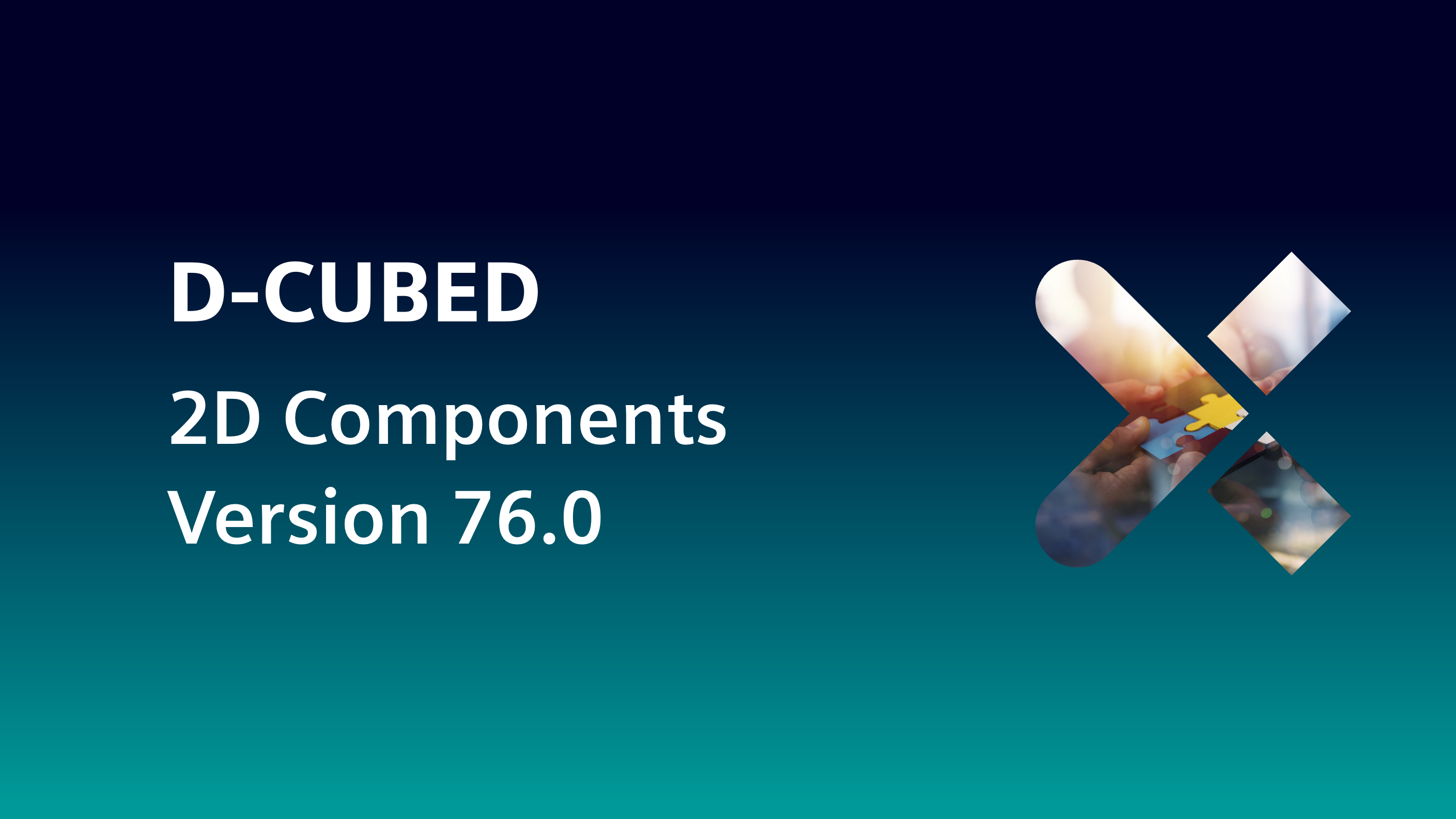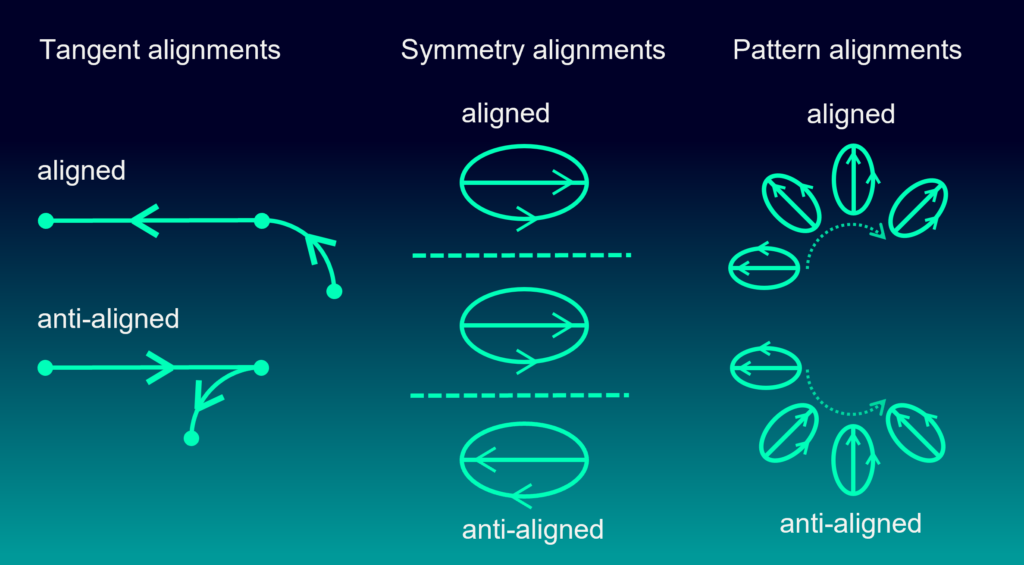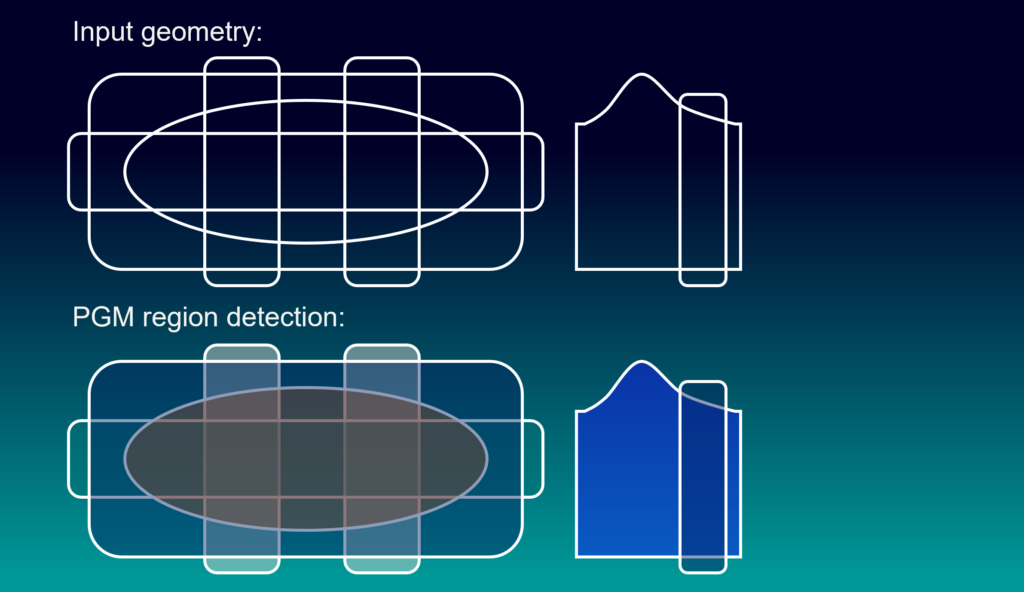D-Cubed 2D Components version 76 release

D-Cubed 2D components are integrated by software developers to add functionality to the sketching environment of CAD/CAM/CAE and AEC software applications. These applications are used to design, analyze, visualize, and manufacture products from consumer goods to aircraft engines and commercial buildings.
D-Cubed 2D DCM version 76.0
D-Cubed 2D DCM (2D Dimensional Constraint Manager) is widely acknowledged as the leading 2D geometric constraint solver. In addition to driving the sketcher in many CAD products, 2D DCM is used in CAM, CAE and other geometry-based applications. Enhancements introduced in version 76.0 of D-Cubed 2D DCM are described below.
Alignment control for circular pattern constraints
Constraints applied to directed and curved geometries can have multiple satisfied configurations, corresponding to different relative alignments of the geometries involved. Prior to 2D DCM version 76 alignment control was supported for many situations, including parallel, tangent, symmetric, directed distance, perpendicular and linear pattern constraints. With version 76 applications can control the relative alignment of directions involved in circular pattern constraints. This development completes the alignments functionality in 2D DCM.
A circular pattern constraint defines that a second geometry is positioned to be coincident to the result of rotating the first geometry. An aligned circular pattern constraint has the second geometry direction the same as the rotated value. The anti-aligned solution has that patterned geometry direction rotated by 180 degrees from the calculated pattern angle.

Figure 1: Examples of controlling the alignment of directed geometry types in D-Cubed 2D DCM. The new function for controlling alignment in circular patterns is illustrated on the right.
Equal distance offset half-space
The 2D DCM equal distance constraint type is applied between two pairs of geometries. Where the equal distance measurements are from curves, a half-space can be defined for the measurement so that the distance supports both positive and negative values.
Up to 2D DCM version half-spaces were supported for equal distances involving lines and circles. Version 76 extends this to equal distances between offset curves.
Linear equations containing angular and length variables
Previous versions of 2D DCM rejected variables from linear equations if they would result in combining variables defined directly by variable distance and variable angle dimensions. The effect of this was that to constrain lengths and angles in an equation it was necessary either to use a non-linear equation, or an intermediate simple variable and two linear equations, both resulting in a less efficient constraint scheme. This restriction has now been removed, so customers using these workarounds can remove that from their code for better performance.
Under-defined degrees of freedom calculation improvement
2D DCM can compute details about how under-defined geometry is free to move using the results of the most recent full evaluation of the model. This can include information on whether a geometry must rotate about a fixed position, for example, or translate in a particular direction. 2D DCM version 76 will use its internally stored data to compute the under-defined freedoms more reliably.
Changes in analysis of equivalent geometry during evaluation
2D DCM solving often needs to identify groups of geometry that are equivalent in terms of position, direction, or similar properties. With the latest version of 2D DCM this is done more efficiently where the information is frequently required. This can result in more efficient and consistent solves for models with repeated or similar geometry.
D-Cubed PGM version 76.0
D-Cubed PGM (Profile Geometry Manager) enhances the productivity of sketchers. It does this by working with higher level geometric data and not individual curves. Examples include offsetting loops while inserting, extending and trimming edges, adding constraints to loops rather than to individual curves, and solving the shape of loops while maintaining their perimeter length or area. PGM is often used to add capabilities to a 2D DCM-based sketcher. Enhancements introduced in version 76.0 of D-Cubed PGM (Profile Geometry Manager) are described below.
Support for parallel computation when finding loops
D-Cubed PGM can identify closed regions that arise through the intersection of open or closed chains of geometry (see Figure 2). The functionality can be used to identify the nearest closed loop to a cursor position, or for further PGM analysis such as area computations.
Version 76 can divide loop finding into sub-tasks which can be computed in parallel using multiple application threads. The initial implementation is designed for sketches that consist of many disjoint profiles, where the benefits of parallelization will outweigh the initial cost of splitting the the work into multiple tasks.

Figure 2: PGM identifies regions created by intersecting loops of geometry